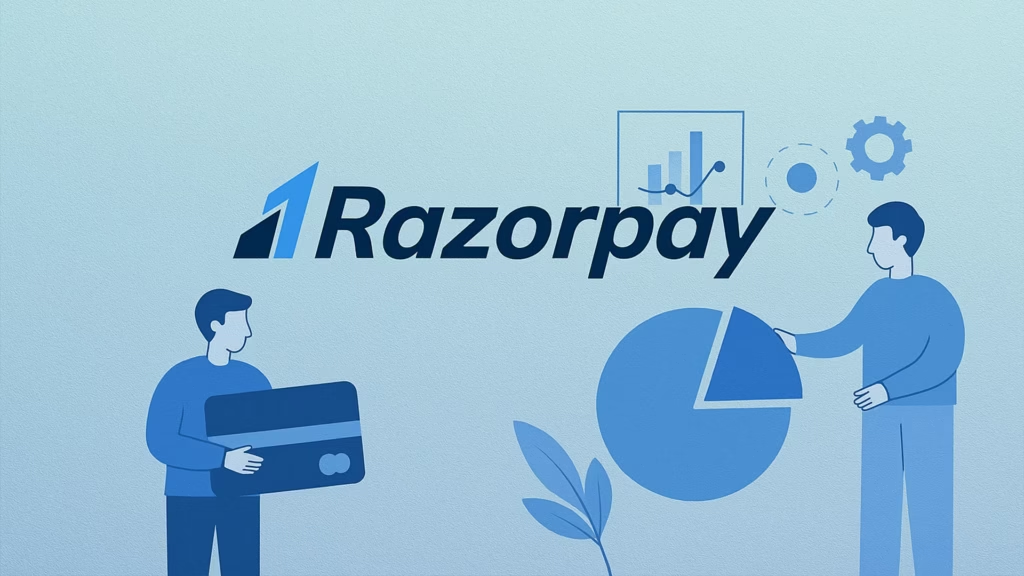In 2014, accepting online payments in India was a nightmare for businesses. Payment gateways were clunky, integration took weeks, settlement was unpredictable, and customer support was terrible. Harshil Mathur and Shashank Kumar experienced this frustration firsthand while building their previous startup. After spending two months just integrating a payment gateway, they realized the problem wasn’t their inability, it was that existing solutions were fundamentally broken. They shut down their startup and decided to fix payments itself, an audacious move for two college graduates with no fintech experience.
The early days of Razorpay payment were brutal. Banks didn’t take them seriously. Regulations seemed impossible to navigate. Getting the first merchant to trust them with their payments felt harder than building the technology. But they had developer empathy that established payment companies lacked. They knew what frustrated businesses because they’d lived it. Razorpay built the payment gateway developers wished existed: easy integration, clear documentation, transparent pricing, and support that actually responded. A decade later, Razorpay processes payments for over 10 million businesses, achieved unicorn status with a $7.5 billion valuation, and became the payment infrastructure that powers India’s digital economy.
Building for Developers, Not Corporates
Most payment companies in 2014 were built for large enterprises. They had lengthy sales cycles, complex pricing, and integration processes requiring dedicated IT teams. Razorpay payment took the opposite approach, build for developers who just wanted to add payments to their product quickly. They created comprehensive documentation with code examples in multiple languages, offered plug-and-play libraries, and kept pricing simple and transparent. No hidden fees, no percentage games, just clear rates that developers could understand.
The Razorpay payment dashboard was designed like a SaaS product, not a banking portal. Clean interface, real-time analytics, easy reconciliation, and features developers appreciated like webhooks, refund APIs, and test modes. Integration that took weeks with competitors took hours with Razorpay. This developer love translated into word-of-mouth growth. Startups building products told other startups about Razorpay, and that organic recommendation proved more valuable than any advertising.
The company also embraced open-source philosophy. They released several tools as open-source, contributed to developer communities, and built credibility beyond just their product. This community-first mindset made Razorpay the default choice for India’s startup ecosystem. When YC-funded startups came to India, when college kids built their first SaaS product, when freelancers needed to accept payments, they chose Razorpay because it was built by developers for developers.
What separated Razorpay payment from competitors was relentless focus on developer experience. Every feature, every API endpoint, every error message was designed thinking about the developer who’d use it. This obsession paid off when satisfied developers became evangelists, recommending Razorpay without being asked. The company grew to thousands of merchants before investing significantly in sales teams, proving product-led growth works in fintech when you solve real problems elegantly.
Beyond Payment Gateway
Razorpay could have stayed a successful payment gateway, but founders saw a bigger opportunity. Businesses using Razorpay for payments still struggled with banking, invoicing, vendor payments, payroll, and access to working capital. Each problem required dealing with different vendors, multiple integrations, and fragmented experiences. Razorpay payment decided to solve everything, becoming a complete financial operating system rather than just one component.
RazorpayX, their banking platform, let businesses open current accounts, manage payouts, automate vendor payments, and handle tax payments from a single dashboard. This eliminated the need for multiple banking relationships and manual reconciliation. Businesses could pay employees, vendors, and contractors with a few clicks instead of generating bank files and visiting branches. The integration between payments received and payments made created powerful cash flow management tools that traditional banks couldn’t match.
Capital and Lending
Razorpay Capital addressed working capital problems for growing businesses. Using transaction data from payment processing, they could offer instant credit lines to merchants without lengthy applications or paperwork. A business processing Rs 10 lakh monthly through Razorpay could access Rs 5 lakh credit within minutes based purely on their transaction history. This data-driven lending was faster and more accurate than traditional bank loans requiring three years of financials and property collateral.
The lending business also created strategic moats. Merchants who took credit from Razorpay were less likely to switch payment gateways because their credit line depended on transaction volume. This cross-selling strategy increased lifetime value per customer while solving real business problems. It was a win-win that traditional payment gateways focused purely on transaction fees couldn’t replicate.
Payroll and Invoice Solutions
Razorpay Payroll automated salary payments, tax deductions, and compliance for businesses. Instead of using separate HR software and manually processing salaries, companies could manage everything within Razorpay. Razorpay Invoicing let freelancers and small businesses generate professional invoices with integrated payment links. These products expanded Razorpay payment’s addressable market beyond just e-commerce to every business that moved money digitally.
Navigating Competition and Challenges
Razorpay’s success attracted intense competition. Cashfree, Instamozy, PayU, and traditional players like CC Avenue fought for market share. International giants like Stripe entered India with deep pockets and global expertise. Paytm and PhonePe, having built massive consumer payment networks, expanded into merchant payments. Razorpay payment faced pressure from all sides, established players above, aggressive startups below, and horizontal platform companies from the side.
The company responded by doubling down on product quality and customer service. While competitors spent heavily on sales and marketing, Razorpay invested in engineering and support. They prioritized uptime, maintained industry-leading success rates, and earned reputation for actually helping merchants solve problems. When a business faced payment issues during critical sales periods, Razorpay’s support team responded within minutes, not days. This operational excellence justified slightly higher pricing and built loyalty that discounts couldn’t break.
Regulatory challenges also emerged as RBA and government increased scrutiny on payment companies. Compliance requirements increased costs and complexity. Razorpay had to invest heavily in legal, compliance, and risk management infrastructure. Some smaller competitors couldn’t handle the regulatory burden and shut down or merged. Razorpay’s scale and funding let them absorb these costs while maintaining service quality, creating competitive advantages through regulatory compliance excellence.
The path to profitability required discipline as investor sentiment shifted from growth-at-all-costs to sustainable unit economics. Razorpay payment cut unprofitable customer segments, optimized pricing, and focused on high-quality merchants. They reached profitability in 2023, proving their business model worked without endless fundraising. This financial discipline positioned them strongly compared to competitors still burning cash to acquire customers who’d never be profitable.
The Road Ahead
Razorpay payment is expanding internationally, starting with Southeast Asia where digital payment infrastructure remains underdeveloped. Their playbook of developer-first products and complete financial solutions can work in markets similar to India. International expansion diversifies revenue beyond India while proving their model isn’t just India-specific but applicable to emerging markets globally.
The company is also pushing into offline payments through POS systems and QR codes for small merchants. While their strength has been online payments, India’s payment market is increasingly omnichannel. A restaurant accepting Razorpay online should also accept it for dine-in. This offline expansion requires different go-to-market and support models but significantly increases addressable market.
AI and automation are focus areas for product development. Razorpay is building intelligent fraud detection, automated reconciliation, and predictive cash flow management. These features help businesses operate more efficiently while reducing Razorpay’s operational costs. The goal is making financial operations so seamless that businesses forget they’re using Razorpay, it just works invisibly in the background.
Conclusion
Razorpay payment succeeded by solving a problem so frustrating that founders experienced it themselves, then building a solution so good that competitors struggled to match it. They combined Silicon Valley’s developer-first philosophy with deep understanding of Indian business needs and regulatory environment. This cultural synthesis created a uniquely Indian product that felt globally competitive in quality and design.
The journey from two frustrated founders to a $7.5 billion unicorn powering millions of businesses shows what’s possible when you obsess over customer problems rather than just building features. Razorpay didn’t win by being first, they won by being better, more reliable, and more helpful than everyone else. As India’s digital economy grows, businesses building on Razorpay’s infrastructure will collectively process trillions in payments, but they’ll rarely think about payments themselves because Razorpay made it invisible. That’s the ultimate success for infrastructure, being so reliable and seamless that customers forget you exist, until something goes wrong elsewhere and they appreciate what they had. Razorpay payment built India’s financial infrastructure one developer at a time, and that foundation will support the next generation of Indian businesses reaching for global scale.



